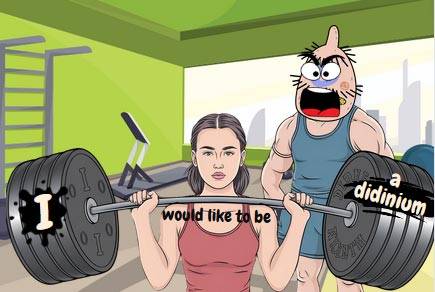LESSON 2.4
Determine the Old Idea
Grades 7 - Adult

Pretend you were given this prompt:
If you could be any wild animal, what would you be? Why?
You—
- Brainstorm for quantity not quality
- Grade the brainstormed ideas
- Put the A ideas in order

You answer like this: If I could be any wild animal,
Review: Assessing the What Statement
Before you start writing, make sure your idea is worth discussing. Check your What Statement.
|
| Yes or No | If No, then do this: |
1. | Is the What Statement a sentence? | Yes | Rewrite |
2. | Does it have two variables? | Yes | Rewrite |
3. | It at least one of them New? | Yes | Brainstorm again |
The Old Section

It’s time to design the Old Section. But how do you begin?

Borrow an Idea from the New Section
To figure out what to write about in the Old Section, take part of the New Section information.
For example, you might borrow didinium or freshwater habitats (since didinium live mostly in freshwater environments globally).

| What Statement | ||
|---|---|---|
| OLD Narrator | VP | Didinium |
| I + Protozoa | would be | a didinium |
-OR-

| What Statement | ||
|---|---|---|
| OLD Narrator | VP | NEW main subject |
| I + lions | would be | a didinium (the lion of protozoa) |
Task 2.4.1 – Small Group
Name at least two possible Old ideas for each What Statement below. Base the Old idea on the New idea. (You might need to look up the last two.)
If I could be any animal,
- I would be a Mekong River porpoise.
- I would be a Mongolian pony.
- I would be one of Wyoming’s black-footed ferrets.
- I would be a wombat.
- I would be a fer-de-lance.
Task 2.4.2 – Small Group
As a small group, answer the following.
If you could be an animal, what would you be?
- Use the New idea you already selected.
- Borrow part of the New Idea.
- Determine the Old Idea.
- Fill in the boxes that have a question mark.
If I could be an animal,

| What Statement | ||
|---|---|---|
| OLD Narrator | VP | NEW main subject |
| I + ? | would be | a (an)? |

